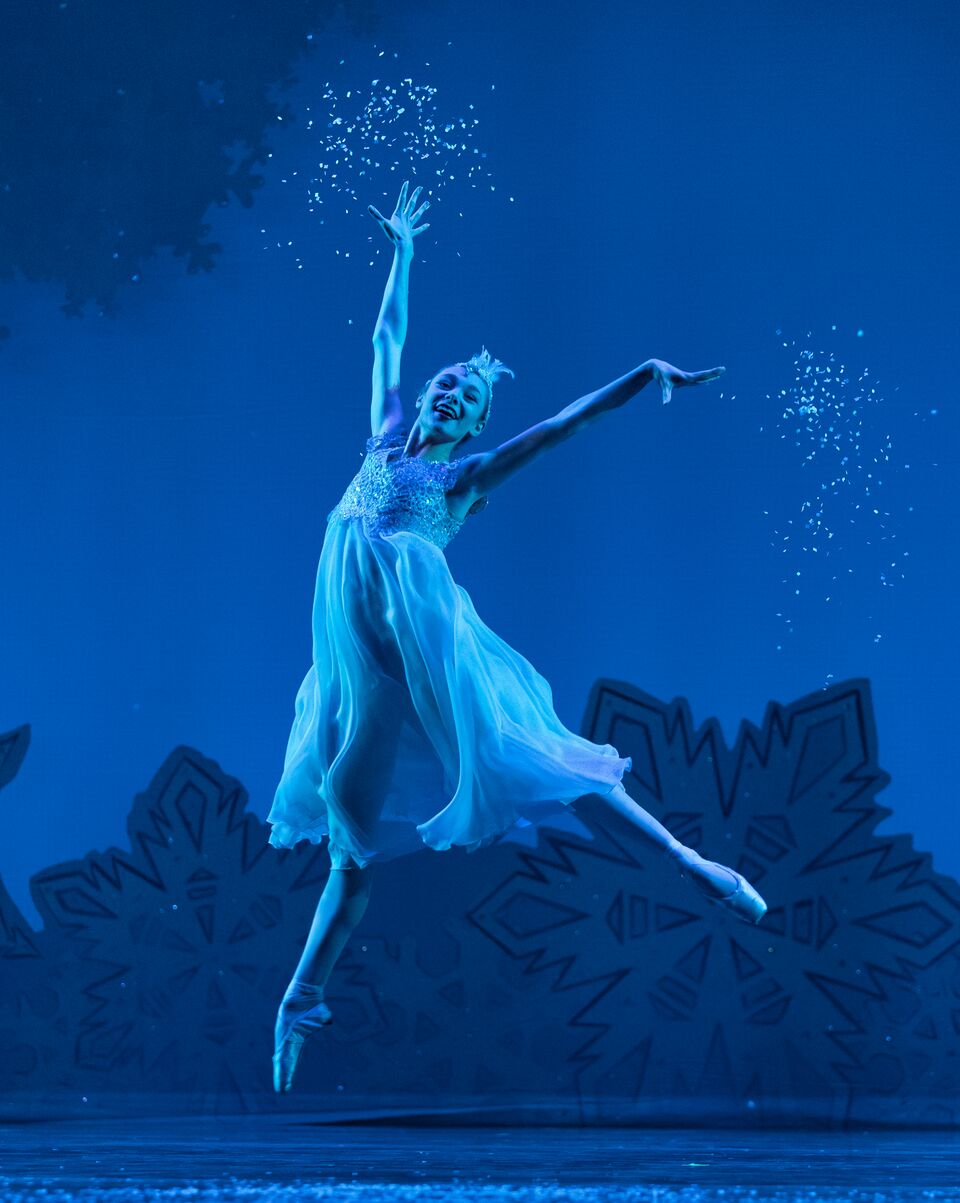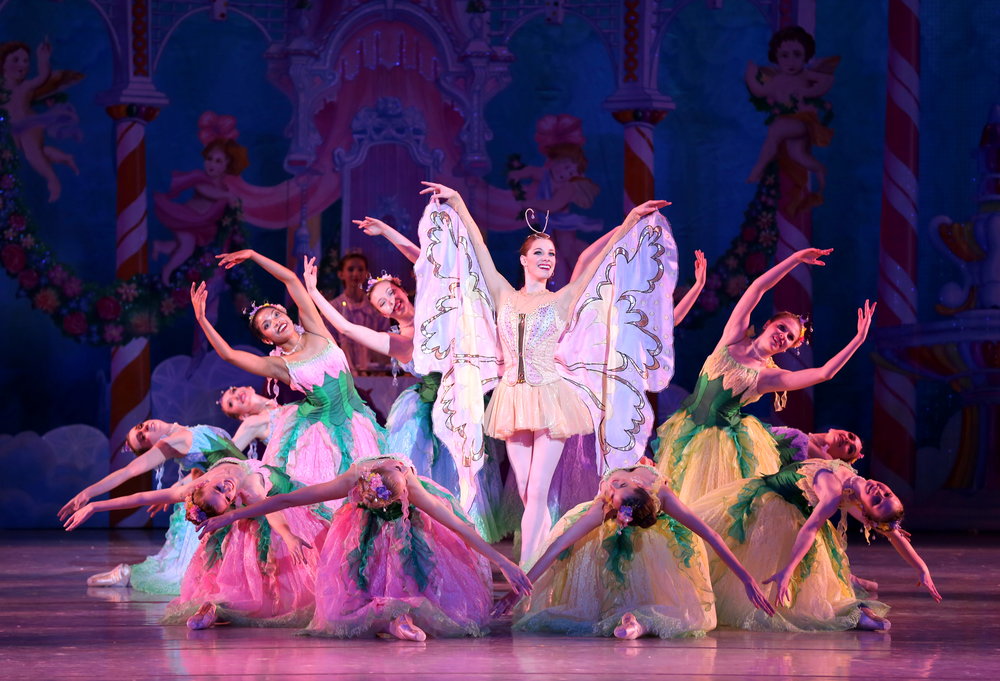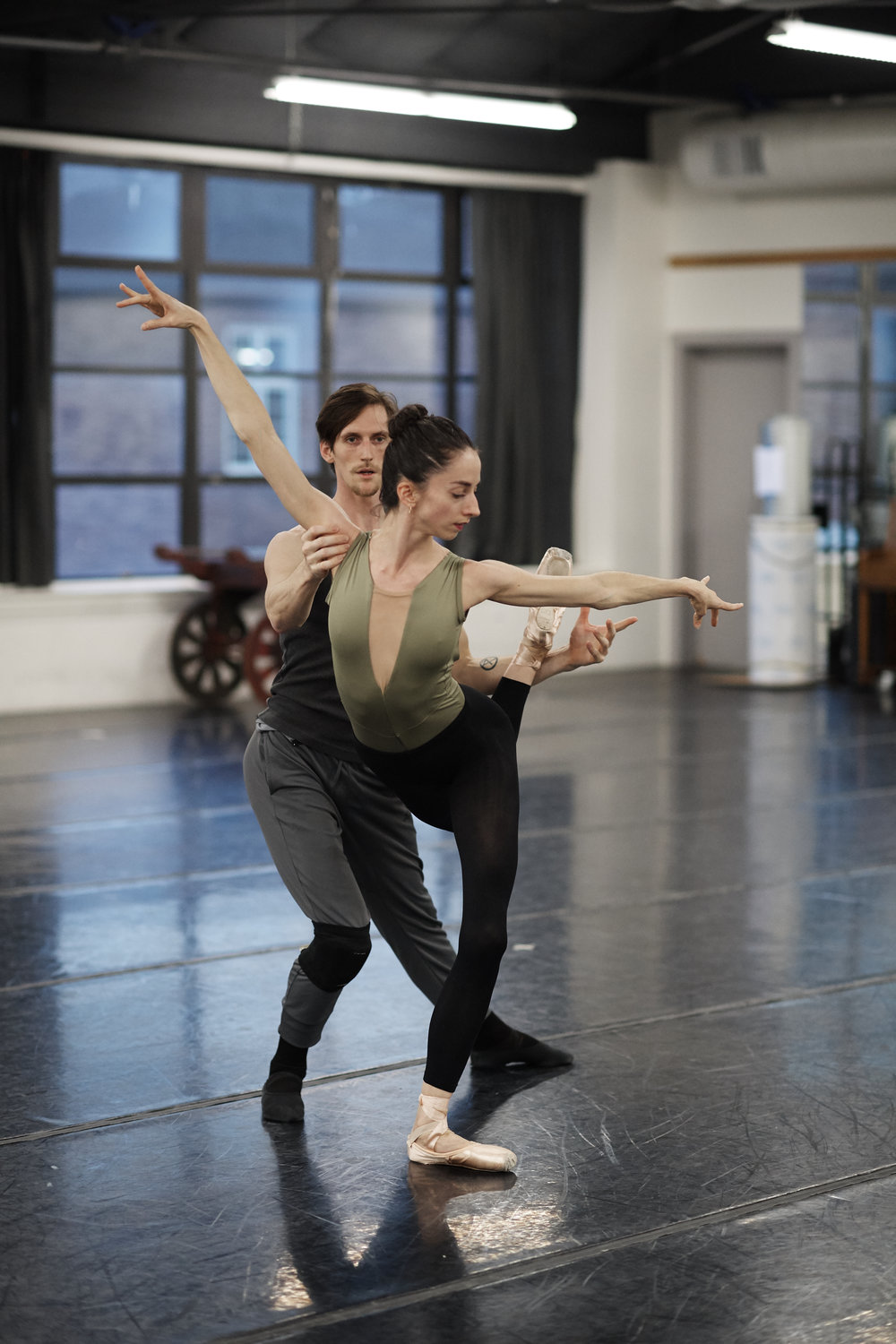DDP Talks To
"The Devil Ties My Tongue" by Amy Seiwert performed for the SKETCH Series, 2013. Photo by David DeSilva. Courtesy of Amy Seiwert's Imagery
December 31st: Jacob's Pillow: Ann & Weston Hicks Choreography Fellows Program, December 31st: New England Presenter Travel Fund, December 31st: Central Pennsylvania Youth Ballet Scholarship, December 31st: 24 Seven Dance Convention, December 31st: National Theater Project Presenter Travel Grant, December 31st: Breck Creek Artist-in-Residence Program, December 31st: Indigo Arts Alliance Mentorship Residency Program, January 22nd: Opera America Grants, March 3rd: Dance | NYC: Dance Workforce Resilience (DWR) Fund, March 31st: SIA Foundation Grants
×
"The Devil Ties My Tongue" by Amy Seiwert performed for the SKETCH Series, 2013. Photo by David DeSilva. Courtesy of Amy Seiwert's Imagery
15 January 2019
World-renowned ballet dancer Carlos Acosta has been appointed as the new director of Birmingham Royal Ballet.
The former principal dancer with The Royal Ballet said taking the role was a “tremendous honour and privilege”.
It comes after it was announced current director David Bintley would be standing down in July 2019.
The Cuban-born dancer and choreographer will take up his appointment in January 2020 and said he wanted to “reach out to new and more diverse audiences”.
Mr Acosta also said his ambition was to expand the repertoire of the Birmingham Royal Ballet.
Read the full article in BBC News.
By Peggy McGlone
Two years after replacing its successful, longtime artistic director with a celebrated ballerina who had never run a company, the Washington Ballet is struggling to close a $3 million debt and attract audiences to its dramatic change in programming.
The company has a different look under former American Ballet Theatre star Julie Kent, who this fall began her third season as artistic director. Four popular dancers left recently, including Brooklyn Mack, an internationally known artist and audience favorite. The company’s repertoire has shifted from the playful, quirky sensibility of past director-choreographer Septime Webre to the high-end standards that fueled Kent’s ABT career.
[Ballet star Julie Kent has big plans for Washington Ballet]
Hiring Kent was part of the board of directors’ overall plan to reinvent the Washington Ballet as a bigger, better company — a national treasure, guided by a star, with the elite repertoire and dancers to rival the world’s great ballet institutions.
“We do believe in the star power of Julie,” says Washington Ballet board chairman Jean-Marie Fernandez. “She is taking what she has learned for 30 years to develop her dancers and bring that to the stage.”
So far, though, it appears that Kent’s fame has not attracted enough ticket buyers and donors to fund the new vision of the Washington Ballet, with more and better dancers performing the “Great Books” of ballet. It’s a big risk, because the transformation will be costly and take years. And then there are the questions no one seems to have asked in the planning stages: Does the public want this kind of company, and will enough donors fund it?
Read the full article in The Washington Post.
By Alastair Macaulay
28 December 2018
Dance is about change. The body keeps altering its shape while we watch it move. Many of the dances that were current yesterday will not do tomorrow.
“Today people don’t dance, they jump; in my day, we danced,” an old man tells his granddaughter in an 18th-century French gazette. She replies, “In your day, they didn’t dance, they walked; today is the true age of the dance.”
Dance is dead; long live dance. How has it changed since 2007 — let alone since 1978? I cite those two dates because, with this piece, I end my time as chief dance critic of The New York Times, a job I began in 2007. But I’ve been a dance critic for 40 years now. It’s also 40 years since I first visited New York from Britain, where I’d discovered dance and other performing arts, not as a practitioner but as a wallflower: a fan who wrote letters. The letters led to criticism; criticism led me to New York.
Read Alastair Macaulay’s full article (his last as chief dance critic) in the New York Times.
By Isabelle Vail
17 December 2018
In a collective review for the New York Times, the paper’s critics selected their favorite moments from dance in 2018. Mentioned first and to great esteem, Pam Tanowitz’s “Four Quartets,” which is set to the poetry of T.S. Eloit, was described as not just illustrating the poems, but letting “their words, spoken with a wide range of expression by Kathleen Chalfant, sound like emanations from the complex stage world created here.”
Tanowitz was a fellow at the NYU Center for Ballet and the Arts, has her own company, Pam Tanowitz Dance, and her work will soon take the stage at New York City Center, where she joins pianist Simone Dinnerstein to showcase their “New Work for Goldberg Variations.” Tanowtiz has upcoming commissions from The Royal Ballet, Paul Taylor American Dance, and the Graham Company.
The review also mentions the New York City Ballet gala, praising the company and writing, “The solos danced by Taylor Stanley in Kyle Abraham’s “The Runaway” exemplified many American diversities, not least stylistic ones. And earlier in the evening, Teresa Reichlen’s moving “We, the dancers” speech, on behalf of City Ballet’s performers — who flanked her onstage — established fresh moral criteria for the company: “We will not put art before common decency or allow talent to sway our moral compass.” DDP is not the only entity apparently noticing NYCB’s apt reactions to scandal within the company. Tiler Peck, a famed principal dancer with the company and strong advocate for female leadership in her field, was mentioned with corps dancer Roman Mejia, who partnered Ms. Peck in “Allegro Brillante” and “Tschaikovsky Pas de Deux” this summer.
Further mention of women artists outside of the ballet circle was made, as Indian dancer Arushi Mudgal’s solo, ‘Murta-Amurta’ was described as “a thrilling range of religious thought and movement texture.” The team of critics for NYT has clearly considered dance in all of its forms and by its makers of both genders this December. Their voice carries far, and we hope the New York Times highlights will lead more companies to take note of the women earning praise and attention by this major entity.
Read the full article in the New York Times.
By Joshua Barone
12 December 2018
“THE DAY,” a new work with major collaborators from the worlds of music and dance, will have its premiere next summer at the Jacob’s Pillow dance festival in Becket, Mass.
The idyllic festival in the Berkshires, whose lineup was announced on Wednesday, will run from June 19 through Aug. 25, with five world premieres and return engagements from several Jacob’s Pillow fixtures.
“THE DAY,” which was conceived by the cellist Maya Beiser, will have its premiere on July 31 and run through Aug. 4, and will be performed by her and Wendy Whelan, the former New York City Ballet star who in her retirement has become an ever-busy champion of new dance. The work features choreography by the dance luminary Lucinda Childs and music by the Pulitzer Prize-winning composer David Lang (his piece of the same name but styled differently, “the day”).
Read the full article in the New York Times.

Samantha Riester as Snowflake in Victoria Morgan’s The Nutcracker. Courtesy of Cincinnati Ballet Photo by Peter Mueller.
By Isabelle Vail
3 December 2018
What does it take for a woman to create a production of The Nutcracker?
The answer is simple: they require the same resources and support that male choreographers receive. Unfortunately, woman-choreographed versions are often regionally-staged, gaining less attention than their male-choreographed counterparts on the NYC/San Francisco stages.
That does not, however, mean these smaller productions are less masterful or noteworthy.
In 2010, Richmond Ballet was host to chief dance critic for the New York Times, Alastair Macaulay. To the delight of the company’s local audience and media, Macaulay praised choreographer and artistic director Stoner Winslett’s production, writing, “This is the 25th “Nutcracker” production I’ve seen this season, and of the 23 I’ve seen for the first time it strikes me as the most perfect. ”

Lauren Archer in Stoner Winslett’s The Nutcracker . Courtesy of Richmond Ballet . All Rights Reserved. Photo by Sarah Ferguson.
More recently, we see very few regional companies mentioned in the New York Times arts section. A quick glance today, and all of the “Nutcrackers” mentioned are Balanchine’s renowned production for the New York City Ballet.

Ava Chatterson and Dylan Keane Desilva rehearsing Amy Seiwart’s The Nutcracker . Courtesy of Sacramento Ballet . Photo by David Desilva.
Another smaller-budget company, Cincinnati Ballet, was also praised for its woman-choreographed production. During its tour to the Kennedy Center, Victoria Morgan’s production received rave reviews. “The ballet teems with a sense of humor, love, and wonder that pulls the affair together in a harmonious, meaningful way,” writes Sarah Kaufman in a 2016 review for The Washington Post. It is “optimistic” and musical, with “one of the prettiest snow scenes in memory.” Clearly a regional production holds its weight on the big-city stages before big-city audiences.
Other regional productions conceived by woman choreographers include those of Dayton Ballet, choreographed by Karen Russo Burke; Ballet Memphis, choreographed in by Janet Parke, in conjunction with Steven McMahon and Joseph Jefferies; and Los Angeles Ballet, choreographed by Colleen Neary and her partner Thordal Christensen.
2018 welcomes a new production by a woman to the mix: Amy Seiwart’s The Nutcracker. Seiwart’s choreography took inspiration from Marius Petipa’s grand pas de deux and Frederic Franklin, who created the version that Seiwart danced as a young girl. Her twist? Marie (called Clara in many productions), is an independently-thinking girl who makes her own decisions.
As Seiwart and her fellow woman choreographers present their versions this season, DDP hopes to see praise like that of Macaulay and Kaufman’s in major publications, reminding our community that women can create full-length masterpieces, too.
You can purchase tickets to the above productions with the following links:
By Isabelle Vail
4 November 2018
A legend in the international ballet scene, Diana Vishneva retired from American Ballet Theatre’s stages last year, but her career has not slowed down. Still dancing and innovating, and recently a new mother, Vishneva has conceived a dance festival engaging young Russian choreographers.
CONTEXT festival is a multi-day even that includes lighting design workshops, guest company performances, master classes from contemporary and classical figures, a film project, and a talk in addition to young-choreographers performances. Karen Kain, artistic director for the National Ballet of Canada, headlined the “Context Speaks” talk, discussing art, career, and life with choreographers and dancers.
The roster of young Russian choreographers featured in the past includes Vladimir Barnabas, Konstantin Keyhel, Lilia Burdinskaya, Konstantin Semenov, and Olga Vasilyeva. With a female leader at its helm and women emerging as major figures in this festival, we will look forward to future CONTEXT festivals eagerly and commend Vishneva on her innovation and productivity.
Learn more about CONTEXT here.
By Camille Bacon-Smith
2 December 2018
In November, Jessica Lang Dance surprised fans by announcing that the company would disband in April, after its current touring season. Although I found the evening at the Annenberg a little uneven, world premiere “us/we” shines.
During the artists’ conversation after the November 30 performance, Lang compared a dance program to a meal and said she tries to offer a variety of styles — the audience doesn’t want a whole evening of dessert. These five dances lived up to her mission.
Lang’s lightness and “Glow”
“Solo Bach” opened the evening with selections from Bach’s Six Sonatas and Partitas for Violin Solo. Patrick Cocker danced with the lightness I expect from Lang, who deftly combined classic and modern elements, and even hinted at Baroque dance. However, it is barely an amuse-bouche, so slight I passed over it in last year’s review. It seemed strange to bring it back this year. The excerpt from “Aria” kept the music in the Baroque period with Handel’s gorgeous “Qual Nave” from the opera Radamisto. The trio (Julie Fiorenza, Eve Jacobs, and Laura Mead, in Fritz Masten’s flowing red dresses) could have stepped off a Grecian urn. The dance incorporated elements of Martha Graham and Isadora Duncan, including the iconic Duncan circle with upraised clasped hands. But if dance is a meal, we hadn’t reached the salad yet.
By Isabelle Vail
27 November 2018
The ABT Incubator Program has wrapped up after two weeks of exciting Instagram posts and anticipation within the dance community. DDP has closely followed the initiative, as it is a model of inclusivity. Led by Principal David Hallberg, the initiative lent studio space and opportunity to three male and one female dancer in the company and two women choreographers. These artists were James Whiteside, Duncan Lyle, Sung Woo Han, Gemma Bond, Kelsey Grills, and Gabrielle Lamb. Over 80 applications were received by Ballet Theatre, and leadership’s decision to include a diverse and half-male, half-female roster of artists is notable after similar initiatives by other companies, like the Joffrey Ballet’s Winning Works program, have been overwhelming male. The mission of the company’s Incubator was to evolve, create, and explore. A melting pot of styles, from a tutu-clad piece by Bond; to grounded modern movement from Lamb; and to the Ashton-inspired homage to female dancers of ABT by Whiteside, this series did just that.
A similar program is set to take place in May, hosted by Ballet West. Along with The Washington Ballet, Charlotte Ballet, Richmond Ballet, and Cincinnati Ballet, Ballet West’s National Choreographic Festival “will focus on the work of women choreographers and women artistic directors from around the world.” Pieces by Africa Guzman, Natalie Weir, Gemma Bond, Katarzyna Skarpetowska will have their world premieres, and the refined works of Jennifer Archibald and Robyn Mineko Williams will complete the program. This program will also feature a symposium with Kate Mattingly, Assistant Professor of Dance at the University of Utah, Artistic Director of Charlotte Ballet, Hope Muir, choreographer África Guzmán, Artistic Director of Cincinnati Ballet, Victoria Morgan, choreographer Jennifer Archibald, and Artistic Director of Ballet West, Adam Sklute. The topic of the gender divide in leadership roles in ballet will take center stage.
Boston Ballet is contributing to this pool of female initiatives with its ChoreograpHER program. Permitting female dance students and professional dancers to develop choreographic skills, this initiative invests in new, innovative works by female artists through three main pillars: in the classroom in 2019, 2020, and 2023, in the studio for the next three years, and on stage at Boston Opera House for the 2020-2021 season. DDP founder Liza Yntema will join Boston Ballet leaders in February for a visit to discuss their initiative and how DDP can best support the conception and promotion of similar undertakings.
This is Ballet West’s third Festival since its creation in 2017. The ABT Incubator, open to all to apply, will return in the next season, likely bringing another round of diverse and equitable works to this company’s dancers. A database guide for these and more programs, featuring how to apply to initiatives, their requirements, and when to apply, is in the works. DDP hopes to share this guide by the new year.
By Isabelle Vail
5 November 2018
New York University is known for both its commitment to the arts and its development of stars in film, to art, to dance.
The university’s Center for Ballet and the Arts is lesser-known and in its nascent stages, despite having won support from major funders like the Virginia B. Toulmin Foundation and the Andrew W. Mellon Foundation. Its purpose? To study ballet and related arts, bringing together artists and scholars to develop groundbreaking and long-needed research to the field.
This center is the first of its kind at a major research university, advancing both the arts of ballet dancing and technique and dance as an area of academia. CBA is led by a team of five, four of its members being women, and its fellows appear to be a female majority.
With support from the Toulmin Foundation, CBA was able to launch the Virginia B. Toulmin Fellowship for Women Leaders in Dance. The fellowship, according to CBA’s website, is “designed for women creators (e.g. choreographers, composers) that promotes broader gender equity in the field of dance. The program provides fellows with a stipend, access to studio and office space, an apartment in some cases and time away from daily life to focus on their specified project – a ballet, a score or other work of their imagining related in some way to ballet.”
The center also supports an Artistic Partnership Initiative, through which the center and professional dance companies team up to inspire the creation of new choreography. This initiative comes in the form of a residency, during which fellows selected by company artistic directors develop new work at the center for multiple weeks. Gemma Bond, Shannon Glover, Julie Cunningham, and Wubkje Kuindersma are the four last residency recipients, all female, and all well-respected in the community.
With high-profile names like Lauren Lovette and Allegra Kent on its list of fellows, CBA is moving towards becoming a household name in the business and development of dance – if it is not already there.
Reach out to us to learn more about our mission.
"The Devil Ties My Tongue" by Amy Seiwert performed for the SKETCH Series, 2013. Photo by David DeSilva. Courtesy of Amy Seiwert's Imagery
